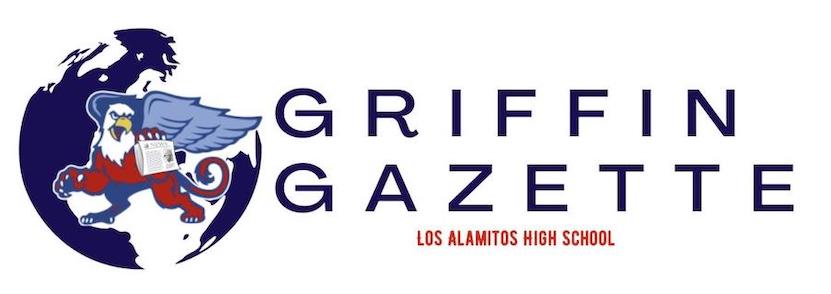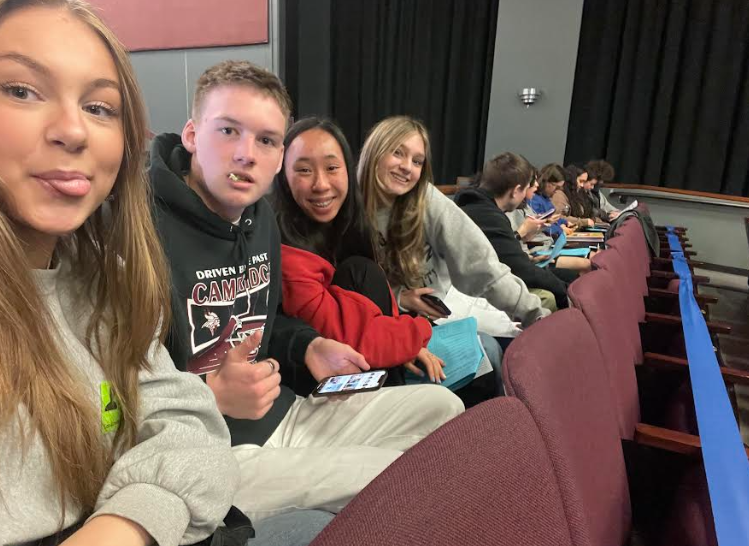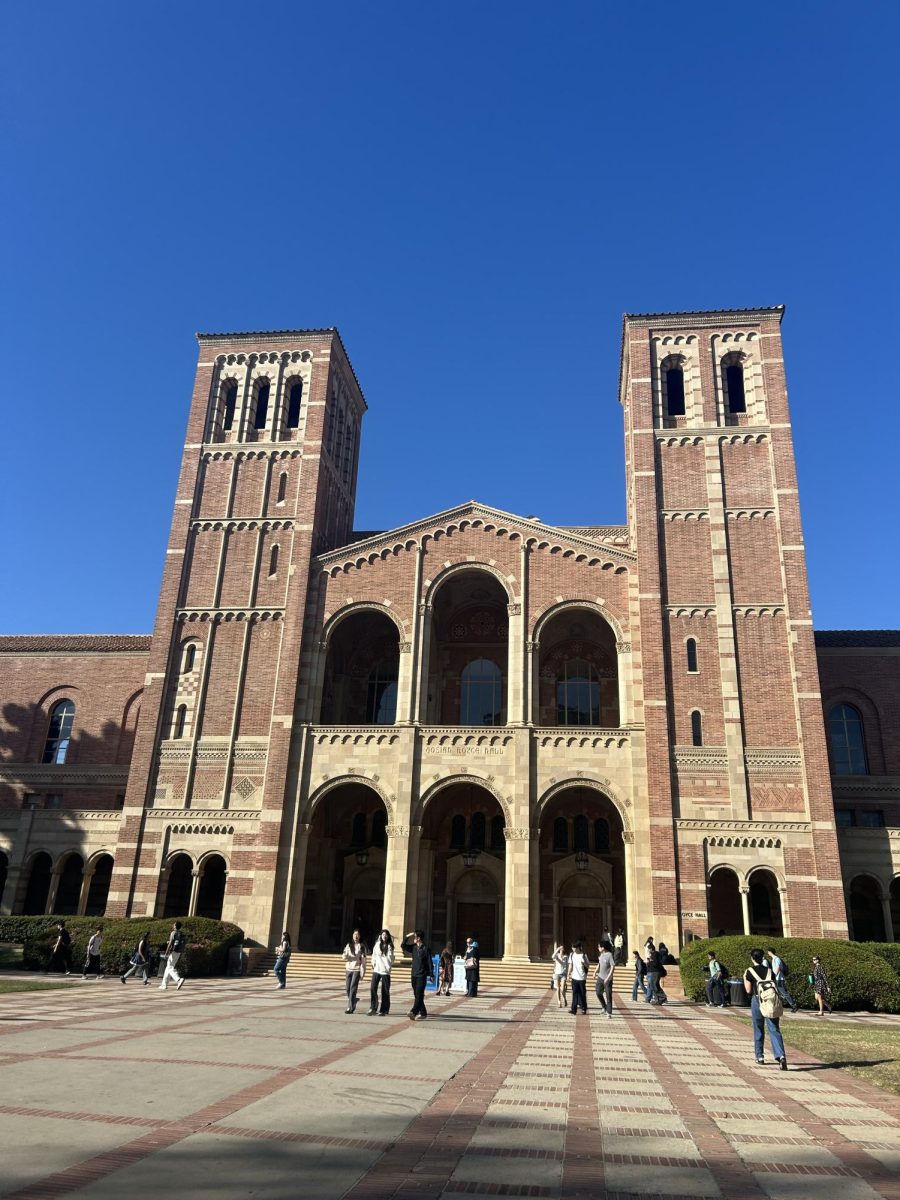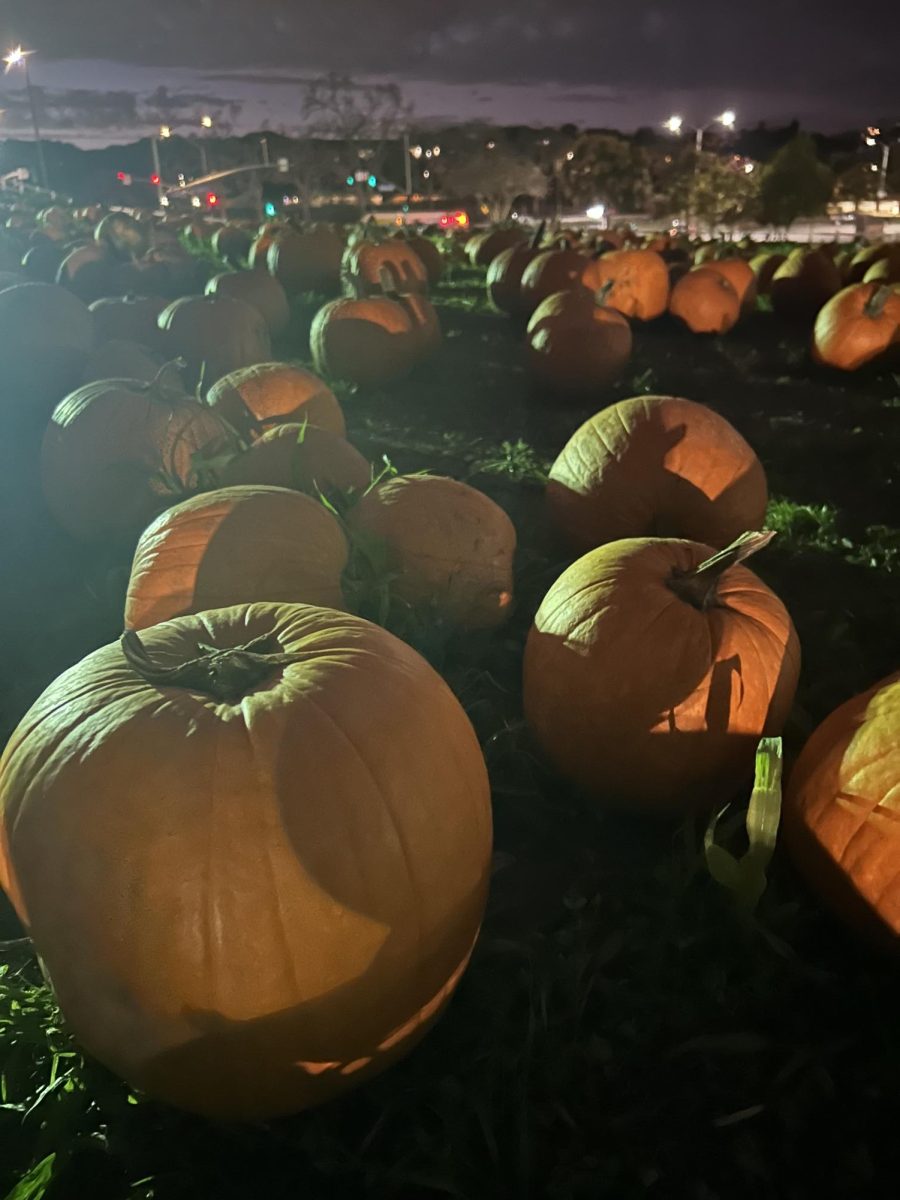Danish exchange students visit Los Al
Students from Denmark visited Los Al for two days of memorable experiences
Danish students having fun with their Los Al hosts during school hours
April 19, 2023
LOS ALAMITOS, CA — For the past years, students at Los Alamitos High School may have been used to Japanese and German exchange students visiting our school. However, our school recently received student visitors from the Scandinavian nation of Denmark, a place that our students may have not been in contact with very often.
Supported by teachers Lisa Sragovics and Maria Ezcurra, the exchange program with Denmark was formulated as a way to break cultural disparity and unite people across the globe through friendly meetings. Most of all, making students communicate with people who possess differences of both culture and nationality helps foster new skills of leadership and cooperation.
“Maria Ezcurra and I planned the exchange program with the Danish students because our Griffins are awesome ambassadors,” Mrs. Sragovics said.

During their first meeting, the students of Los Al met their new Danish companions at a special bonfire in order to get to know them.
“We held a bonfire on the day they arrived in order to meet our students. Getting to meet my student, Tristan, was exciting since we shared common interests,” said student host Ashley Woo.

The school’s Danish friends came from Aarhus, a famous port city known for its beautiful coastline and classical village blended with modern architecture. The visiting Danes come from the Ranum Egterskole College. In spite of its name, it is actually a high school with a very different structure from ours. Our visitors’ home school is for international students, which includes kids from various European and Asian nations.
“100 of them are international, and the rest are Danish,” said Los Al student host Melani Stewart.
The rules the visiting Danes were used to had some notable differences with our customs. While students at Los Al could drive to school once we reach the age of 16, driving in Denmark is not permitted until the students are 18. Second, their school does not emphasize mandatory arts programs, even though Denmark is famous for many artists.
“They don’t have an arts program,” said host Sean Herrera about what he found shocking about the Danish school.
Another notable difference found between the hosts and visitors was their school schedule. In contrast to Los Al’s six 50-minute periods and 30-minute lunch, Danish students get something completely different.
“Each period is an hour and 20 minutes each, but they only have four classes a day,” Stewart said about her visitor’s school day.
The sense of rush seen in American culture was a surprise to the Danish students, as many countries all over Europe have a more laid back lifestyle compared to ours.
“He was shocked the lunch time here was really short. Their lunch time is an hour,” said Sean Lee about his Danish student’s reaction to American schools.
In spite of the differences in habits and culture, Los Al’s student hosts still had a blast meeting new people and taking classes with them. This is especially true for the classes they took together, as it gave them a chance to compare how different countries teach the same class.
“My student specifically, Tristan, really enjoyed history so it was fun to see what he thought of our classes compared to the ones he takes back at home,” Woo said.
Though many American customs may have shocked the Danish visitors, there were still some exciting factors that compelled them to come here. What motivated the Danish students to come was mostly America’s presence in pop culture, especially through its constant appearance in the global stage.
“I’ve seen and heard about America through social media, and it made me curious about the country,” said Danish exchange student Anni Cheung.
When visiting the U.S., the Danes found some parts of our nation very different from theirs. First of all, the scale of everyday items like food and city infrastructure was drastically different from what citizens of European nations are used to.
“Food portion size and everything is bigger,” said Cheung about what shocked her about American food culture.
Though school exchange programs may just sound like school work, the Danes and their hosts also took some time to have fun. The Danish saw all the famous sites that Southern California had to offer. This includes our famous coastal cities such as Los Angeles and Santa Monica. Even though Denmark and Scandinavian nations as a whole are very coastal, with the sea ingrained into their culture since ancient times, much of their beaches are not warm like California’s.
“They did everything that’s sick about California,” said Lee about their outings.
Even if the visitation from the Danish students was shorter than this year’s Japanese and German exchange programs, the hosts, visitors, and teachers who support the program firmly believe that it should be continued for years to come. Part of enjoying life is to try new things, and if people are only exposed to one culture, their lifestyle would be bland. Even if going to strange and different places may yield a mixture of good and bad experiences, it is all the more important in forging an open mindset about our surroundings.
“International connections can change your perspective. That is education!” Mrs. Sragovics said.






